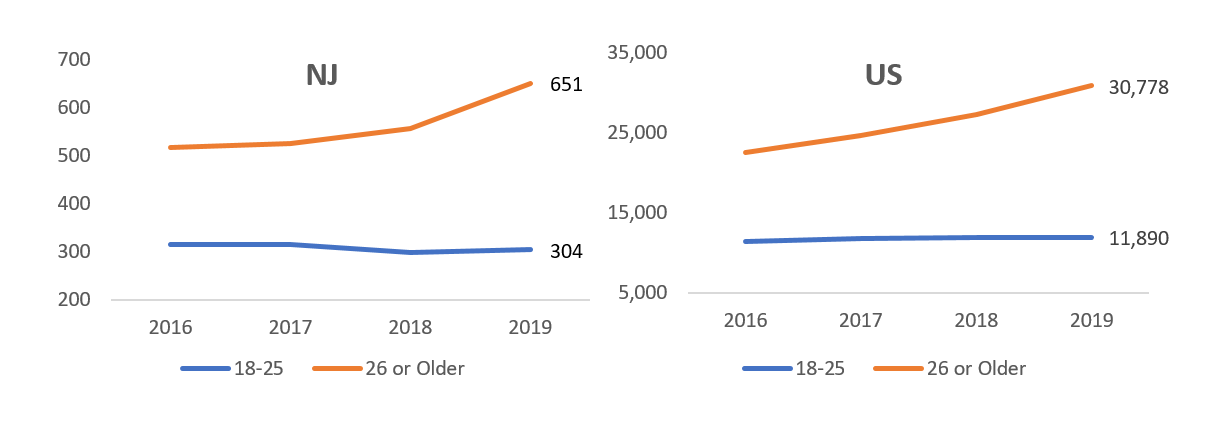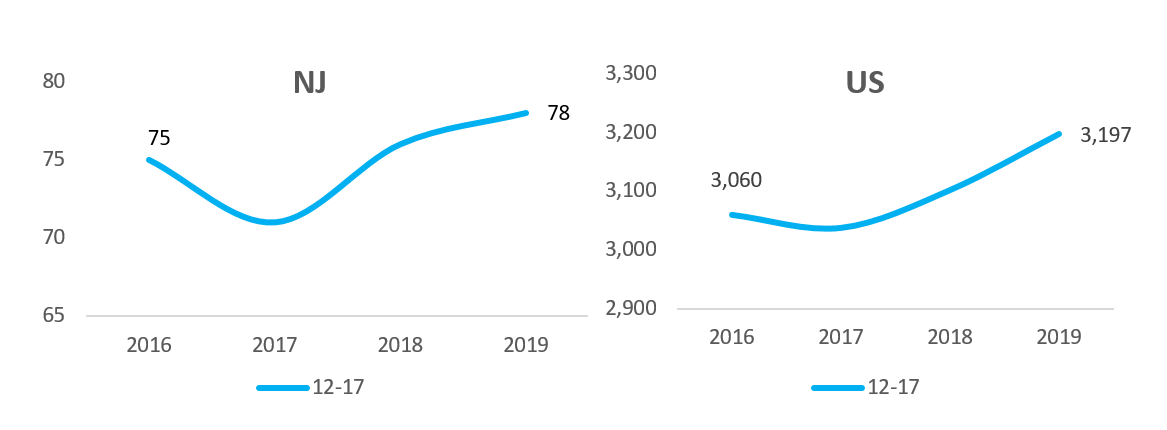In 2010, the state of New Jersey legalized marijuana for medical purposes with the passage of S. 119 – The Compassionate Use Medical Marijuana Act. In November 2018, the New Jersey State Senate and Assembly Judiciary Committees voted to advance legislation that would legalize recreational marijuana. On December 27, 2020, the New Jersey Assembly approved bills that would legalize possession of up to 6 ounces of cannabis and created the regulatory structure for adult-use-sales (S.21/A.21: and A.1897/4269). On February 19, 2021, the New Jersey Judiciary Committee approved bill A.5342, which addressed penalties for underage use of cannabis. The bill was approved by both houses on February 22, 2021. On February 22, 2021, Governor Murphy, signed three bills related to cannabis legislation. These three bills decriminalized cannabis and paved the way for cannabis to be regulated and taxed in New Jersey. On August 19, 2021, the New Jersey Cannabis Regulatory Commission released the first set of cannabis regulations.
So, how will these laws impact current marijuana use in New Jersey? The most recent data collected from the National Survey on Drug Use and Health indicates that adult and youth marijuana use in New Jersey and in the U.S. is rising. It is notable in Figure 1 below that the sharp increase in older adult (26 and older) use in 2019 corresponds with the actions taken by state legislature in late 2018 to legalize recreational marijuana. The data in Figure 2 show that the increase among youth in New Jersey in 2019 was not as sharp as older adults in the state.
Given the current trends in both adult and youth usage of marijuana, the state is likely to see an increase in use in the years to come by both groups overall. Hence, the state should prepare for these increases by increasing capacity in substance abuse facilities, mental health providers, hospitals, law enforcement and public schools.
A full report providing patterns of marijuana use, perceptions of use, hospitalizations related to marijuana use, educational outcomes, and public safety factors related to marijuana in New Jersey is forthcoming.
Figure 1. Adult Marijuana Use in Previous Years, NJ and US (thousands of people)

Source: NSDUH Estimated Totals by State: https://www.samhsa.gov/data/taxonomy/term/435
Figure 2. Marijuana Youth Use in Previous Years, NJ and US (thousands of people)

Source: NSDUH Estimated Totals by State: https://www.samhsa.gov/data/taxonomy/term/43
